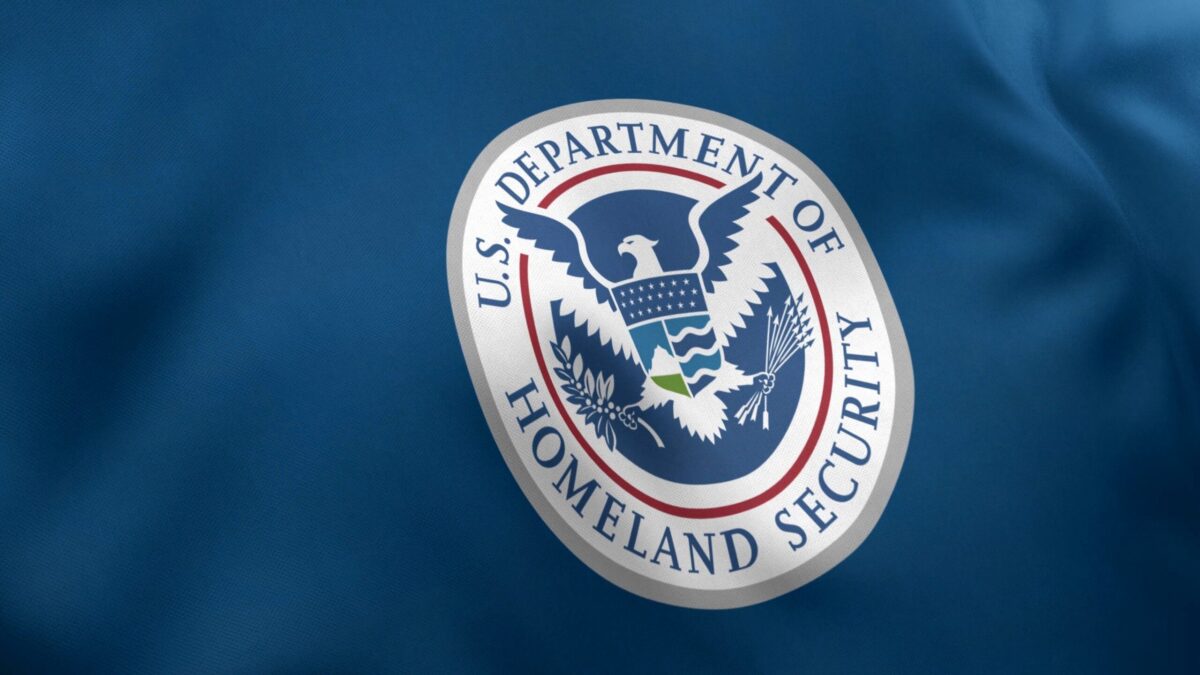DHS at Twenty
This month the U.S. Department of Homeland Security (DHS) turned twenty years old. The department would not exist if not for the tragic events of September 11, 2001. Thankfully, the United States has not had a large scale, coordinated terrorist attack in the past twenty years. In part, we owe this to the people of DHS who serve today, and all those who came before them, in their commitment to protecting our nation.
Despite the passage of time, multiple economic crises, and a pandemic, we must not forget the lessons of 9/11 and why the Department of Homeland Security was created. 441 days passed between 9/11 and signing of the Homeland Security Act of 2002 on November 25, 2002. Perhaps not surprisingly in today’s political environment, Senate Democrats and Republicans disagreed on the largest reorganization of the federal government since the Department of Defense was created after World War II. A look at the Congressional math:
- In the Senate, the Act passed 90-9 (with Senator Murkowski not voting)
- Of the nine voting no, none remain in the Senate.
- Only eleven of the Senators that voted to create DHS are still in the Senate and two of those have announced their retirement at the end of this term (Feinstein and Stabenow).
- Cardin and Markey are now Senators, bringing the Senate total to thirteen for now.
- Another senator that voted yes is now President.
In the House, approximately 55 House members are still in Congress that were a member of the 107th. Not to be left out, the only Supreme Court Justice that remains from 2001 is Clarence Thomas. Thus, there has been tremendous turnover in the elected and appointed leadership since DHS was established. As newly elected and appointed leadership guide DHS, will these leaders see the original vision of DHS and build upon the foundation or seek to alter it and whack away at its parts to create something else?
A quick review of DHS over the years reads much like most U.S. Government Accountability Office (U.S. GAO) reports: Progress made but work remains.
9/11 Commission Recommendations Incomplete
9/11 Commission chairmen, former New Jersey Republican Gov. Thomas Kean and former Rep. Lee Hamilton, D-Ind., have repeatedly noted two recommendations, consolidated DHS congressional oversight and REAL ID Act, are quite incomplete.
Consolidated DHS Congressional Oversight
Unlike the House and Senate Armed Services Committees who have primary jurisdiction of the Department of Defense and pass annual authorization bills, DHS has a panoply of splintered congressional stakeholders. Whether over 90 or over 100 committees and subcommittees, many agree it’s too many. In the Senate, the Government Affairs Committee added homeland security to become the Homeland Security and Governmental Affairs Committee. With government-wide matters and post offices to name, there is often divided time with homeland security besides jurisdictional battles with other committees. In the House, the primary committee should be the Committee on Homeland Security. Divided jurisdiction makes Congress less influential compared to the executive branch. Committee Chairs from both parties have not been able to coordinate passage with only one successful attempt in the House. DHS has never had a comprehensive reauthorization like the Farm Bill for the Department of Agriculture, the Federal Aviation Administration (FAA), or let alone annual authorization bills like the National Defense Authorization Act (NDAA). The NDAA is an established bipartisan national priority. DHS authorizing provisions are implicit or explicit in spending bills instead. Why is homeland security not an annual established bipartisan national priority?
REAL ID Act
The Real ID Act of 2005 enacted the 9/11 Commission’s recommendation that the Federal Government “set standards for the issuance of sources of identification, such as driver’s licenses.” The key identification document provisions were set to start in 2008, but implementation was repeatedly delayed because of refusal by many state governments to adopt it and widespread opposition by the general public. Grant programs were started to get states to make investments and yet the Transportation Security Administration (TSA) enforcement for identification to board flights is postponed currently until May 2025. Will REAL ID make a difference or is biometric technology the way to improve security and safety at airports?
New Missions
Despite the lack of a comprehensive reauthorization, there have been two notable specific authorizations in recent years.
From the Miscellaneous Directorate to CISA
The National Protection and Programs Directorate (NPPD) was formed in 2007 after the Post Katrina Emergency Management Reform Act of 2006 (P.L. 109-295) sent several headquarters preparedness functions to the Federal Emergency Management Agency (FEMA). NPPD’s goal was to advance the Department’s national security mission by reducing and eliminating threats to U.S. critical physical and cyber infrastructure. In 2018, Congress created the Cybersecurity and Infrastructure Security Agency (CISA), as the civilian agency interface for federal cybersecurity and critical infrastructure resilience.
For the majority of NPPD and CISA’s existence, the focus has been about information sharing and voluntary actions by private sector companies. CISA often creates forums, toolkits such as a “series of best practices” on cybersecurity for boards and senior officials. CISA has stressed that “this isn’t intended to be ‘thou shalt,’ it’s much more of the ‘we’ve got to work together.’”
CISA’s recent call for security to be “rebalanced” away from tech users and toward the companies that write and ship code, is part of a new push for large technology providers to take on more responsibility for their products. CISA is mostly not a regulator, and the Biden administration may be hoping CISA can play good cop to other agencies’ bad cop. If CISA begins acting more like a regulator as the recent National Cybersecurity Strategy implies, the policy and political challenges will be plentiful.
Countering Weapons of Mass Destruction (CWMD)
About ten years ago, some congressional voices and DHS sought to create a Countering Weapons of Mass Destruction (CWMD) Office. Among the dynamics was that other departments and agencies had one CWMD official where DHS would have to ask if this a chemical, biological, radiological, and nuclear (CBRN) terrorism matter and send multiple staff. In December 2017, DHS established the CWMD Office by consolidating the Domestic Nuclear Detection Office (DNDO) and a majority of the Office of Health Affairs (OHA), as well as other DHS elements. CWMD was established in statute in December 2018, reorganizing functions of predecessor offices in DHS. About a year later, CWMD ranked last in a review of best places to work in government and implementation has been problematic.
Management Integration
Speaking of the workforce, Congress cannot legislate nor the Secretary mandate culture and morale.
At a recent all day DHS program, every speaker said something about the shortage of talent or the need for new, different talent. Like the private sector, the government is dealing with three years of the pandemic and seismic changes in the world of work. An industry report noted the tremendous work of the DHS workforce during the pandemic. DHS leadership has engaged and communicated with their employees like never before. Security clearance and suitability reciprocity among DHS components are still clunky.
Long-term leases with the General Services Administration (GSA) and safety concerns near the DHS St. Elizabeths campus compound workforce challenges. Thankfully, DHS celebrated twenty years with a confirmed Secretary and Deputy Secretary at their permanent headquarters along with President Biden and original plank holders. Secretary Ridge, the first DHS Secretary, provided recorded remarks.
After numerous attempts to consolidate them into one or two, many financial systems remain across DHS and are still being tweaked. Notably, just after ten years of existence, DHS achieved a clean audit opinion of their financial statements by an independent auditor.
Information Technology and procurement have stabilized but can always find room for improvement. DHS is better than most departments engaging with industry in a meaningful way and has a robust acquisition business forecast.
Various management integration measures over several Secretaries have helped achieve better results. Management Directive 102 helped establish program governance and Congress has attempted to enshrine this structure for over a decade to no avail. The DHS Program Accountability and Risk Management (PARM) made some strides. Unity of Effort initiatives under Secretary Johnson included the Deputy’s Management Action Group, Joint Requirements Council (JRC), and Joint Task Forces. The more integrated and efficient DHS component agencies are the more likely they can 1) focus more time/resources on mission outcomes, 2) use taxpayer dollars wisely, and 3) stay together, because it would be more difficult to break them apart.
It is noticed that DHS celebrates twenty years without a confirmed Under Secretary for Management. It has been nearly four years without one. Congress clearly designated the Under Secretary for Management (USM) as the #3 official in DHS, placing an emphasis on management integration. Several USMs have gone on to become a confirmed Deputy Secretary or Acting Secretary. However, the political dynamics of the then confirmed USM becoming Acting Secretary caused the removal of the last confirmed USM. It was a shame for DHS to lose a management focused official over politization and lack of other DHS leadership.
Politization and Weaponization
The politization of DHS is disheartening. External stakeholders especially in Congress are obsessed with immigration issues. It’s the Department of Homeland Security not the Immigration Department. For the first time since DHS was created, the previous administration held the official position (as a statement of administration policy) to send a component agency back to their pre-DHS department. As of this writing, there are efforts underway to impeach the DHS Secretary, not for “high crimes or misdemeanors,” but over basic policy differences. How sad.
Items for Congressional Consideration/Action
- Comprehensive Immigration Reform – Broad agreement exists that the immigration system is broken, but what to do about it is at both extremes and everywhere in between. A frequently overlooked bottleneck for immigration is not within DHS, but the Department of Justice, Executive Office for Immigration Review. Find and fund a fix under the current construct or consider moving EOIR to DHS to give DHS control over the full lifecycle of immigration.
- Stafford Act Reform – FEMA is being asked to do more. The number of disaster declarations under the Stafford Act is much higher than when the law was passed. Some new thinking here is needed. Various proposals abound.
- Customer Experience – As of this writing, the idea to establish the CX Directorate stems from recommendations approved by the Homeland Security Advisory Council in December. Four DHS component agencies are designated as “high-impact service providers” by the Office of Management and Budget due to the number of individuals they interact with on a daily basis: Customs and Border Protection (CBP), FEMA, TSA, & U.S. Citizen and Immigration Services (USCIS).
- Reduce the Number of Political Appointees – Republicans and Democrats have run DHS for approximately the same number of years. It’s time to examine what leadership roles need to be political vs. career, which political roles need more enumerated qualification requirements, which roles like TSA are for a set term beyond the term of the President, and capping the number of non-career SES and Schedule C appointees.
- Acquisition Tools – DHS has many of the highly desired acquisition tools that DoD and GSA has such as Other Transaction Agreements (OTAs), Commercial Solutions Opening Pilots (CSOPs), and Small Business Innovation Research (SBIR). Challenges and prize competitions can also be used. Congress should make these DHS authorities permanent instead of renewing them in spending bills.
- Funds – DHS is funded through a mix of mandatory funding, discretionary appropriations, user fees and multiple year funding. A more predictable funding structure would allow for better planning and better outcomes.
- Regular reauthorization – Congress needs to find a way to reauthorize DHS on a regular basis. Do it as a stand-alone bill, move it with the NDAA, but do it.
A good day at DHS is preparing and preventing something bad from happening. Routinely DHS stops something bad from happening or mitigates the impact and it often no longer makes the news. The DHS people who serve today, everyday do remarkable work that is seemingly unremarkable with the passing of time. The longevity of the unremarkable days over the past twenty years is truly remarkable.
Those who were not born yet on September 11, 2001 can vote and purchase alcohol. It’s important that we remind ourselves of what life was like before 9/11, the days that followed, and to teach the next generation about what happened that day. They need to understand how the United States came together after 9/11, pushing politics aside, and found common ground for a common cause. Oral histories from those in key roles that day and the 9/11 Memorial can help future generations comprehend how the world changed. After the events of recent years, will we ever see Congress together on the Capitol steps singing God Bless America again?
In twenty years, the nation has not had another “9/11” and we should be thankful for DHS. Let all of us constructively work together with elected and appointed leadership to make DHS a bipartisan national priority for the next twenty years.
Martin Mackes is the Chief Delivery Officer at Jefferson. He is the incoming Chair of the Homeland Security & Defense Business Council (HSDBC) Board of Directors.
Bradley Saull is a Vice President at Jefferson Business Solutions. He was Deputy White House Liaison at DHS and professional staff for the House Committee on Homeland Security.


